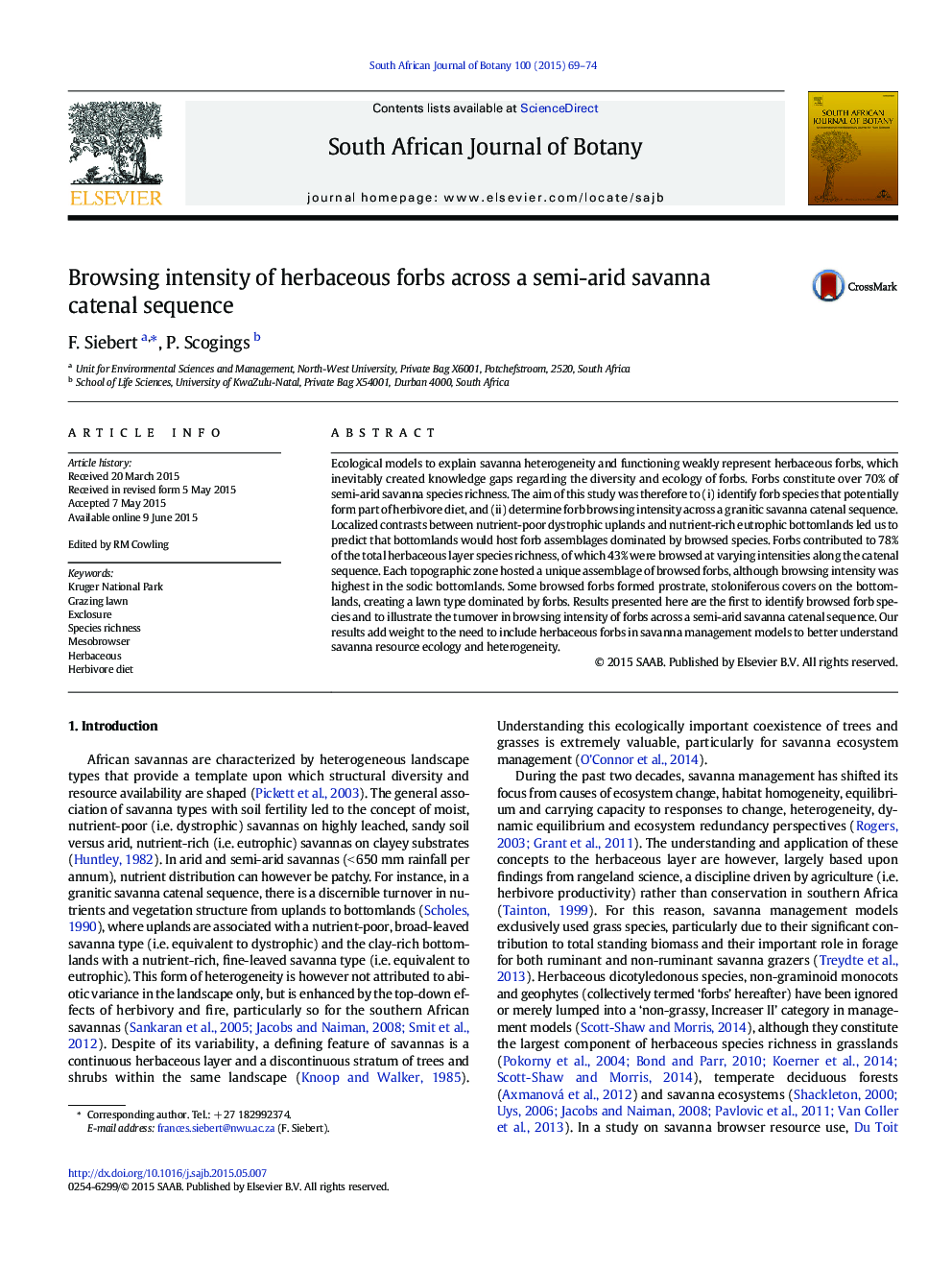| کد مقاله | کد نشریه | سال انتشار | مقاله انگلیسی | نسخه تمام متن |
|---|---|---|---|---|
| 4520373 | 1625158 | 2015 | 6 صفحه PDF | دانلود رایگان |
• Forbs contribute to more than 70% of the species richness in semi-arid savannas.
• The ecology of forbs is inadequately studied in southern African savannas.
• Browsing intensities of forbs were tested across a semi-arid Lowveld savanna catenal sequence.
• Browsed forb species formed unique assemblages across the catenal sequence.
• Contrasts between nutrient-poor uplands and nutrient-rich bottomlands drive changes in browsed forb species composition.
• Some browsed forb species were browsed regardless of the obvious presence of anti-herbivore defense mechanisms.
• Patches of continuous forb cover in the sodic bottomlands are similar in appearance to grazing lawns.
• These ‘browsing lawns’ are presumably created and maintained by heavy browsing.
Ecological models to explain savanna heterogeneity and functioning weakly represent herbaceous forbs, which inevitably created knowledge gaps regarding the diversity and ecology of forbs. Forbs constitute over 70% of semi-arid savanna species richness. The aim of this study was therefore to (i) identify forb species that potentially form part of herbivore diet, and (ii) determine forb browsing intensity across a granitic savanna catenal sequence. Localized contrasts between nutrient-poor dystrophic uplands and nutrient-rich eutrophic bottomlands led us to predict that bottomlands would host forb assemblages dominated by browsed species. Forbs contributed to 78% of the total herbaceous layer species richness, of which 43% were browsed at varying intensities along the catenal sequence. Each topographic zone hosted a unique assemblage of browsed forbs, although browsing intensity was highest in the sodic bottomlands. Some browsed forbs formed prostrate, stoloniferous covers on the bottomlands, creating a lawn type dominated by forbs. Results presented here are the first to identify browsed forb species and to illustrate the turnover in browsing intensity of forbs across a semi-arid savanna catenal sequence. Our results add weight to the need to include herbaceous forbs in savanna management models to better understand savanna resource ecology and heterogeneity.
Journal: South African Journal of Botany - Volume 100, September 2015, Pages 69–74
